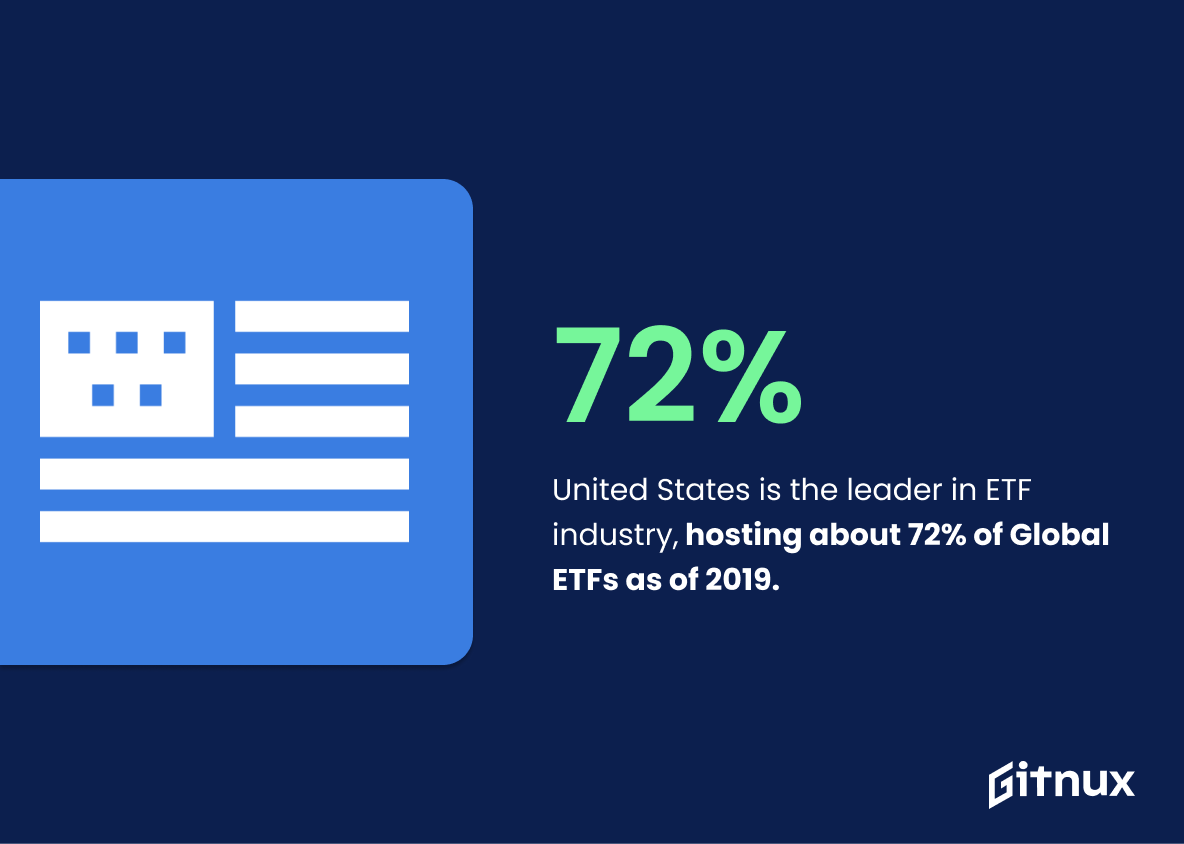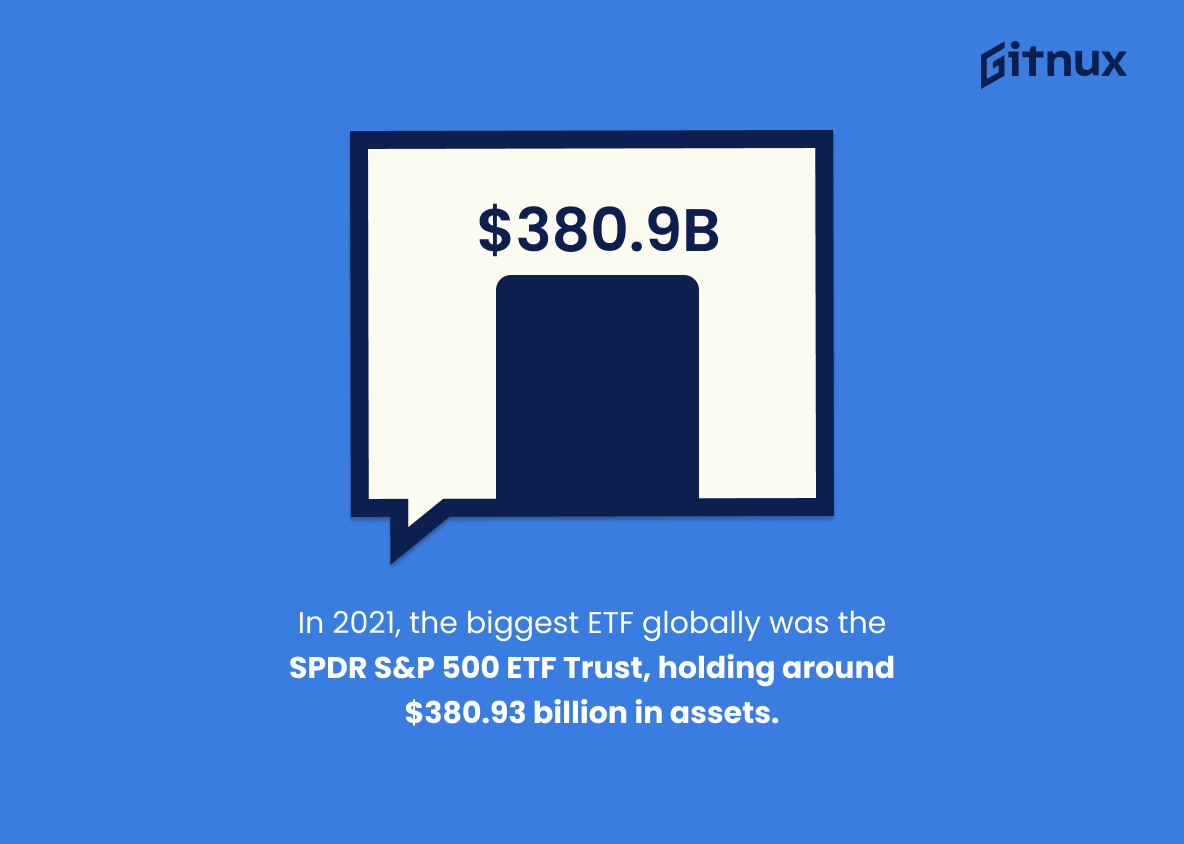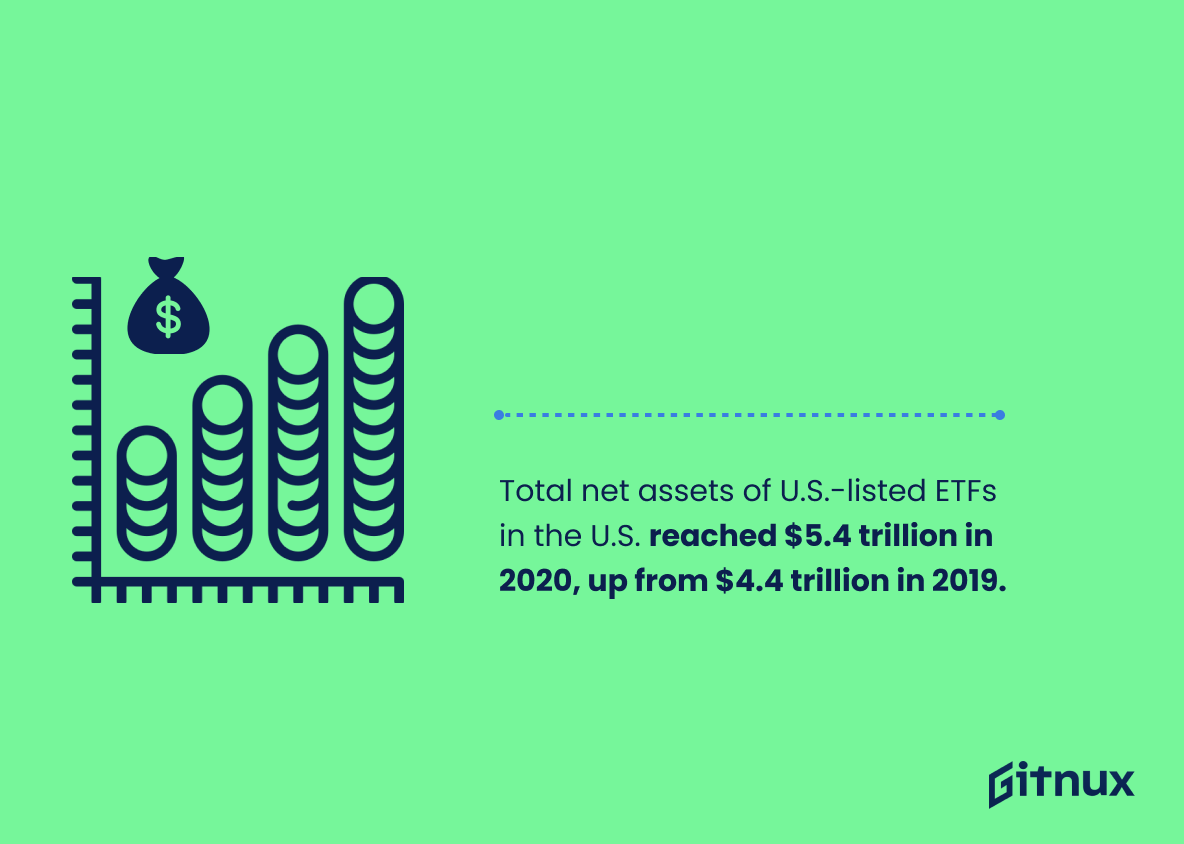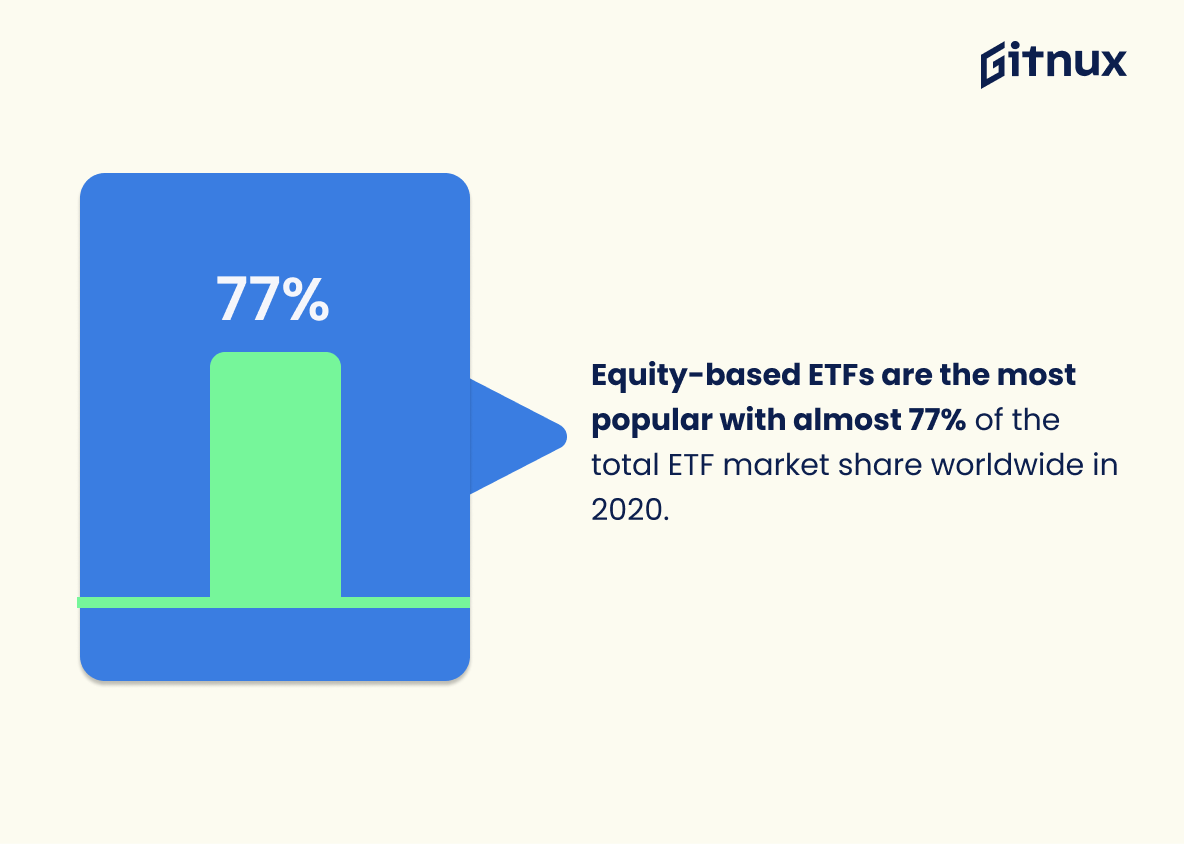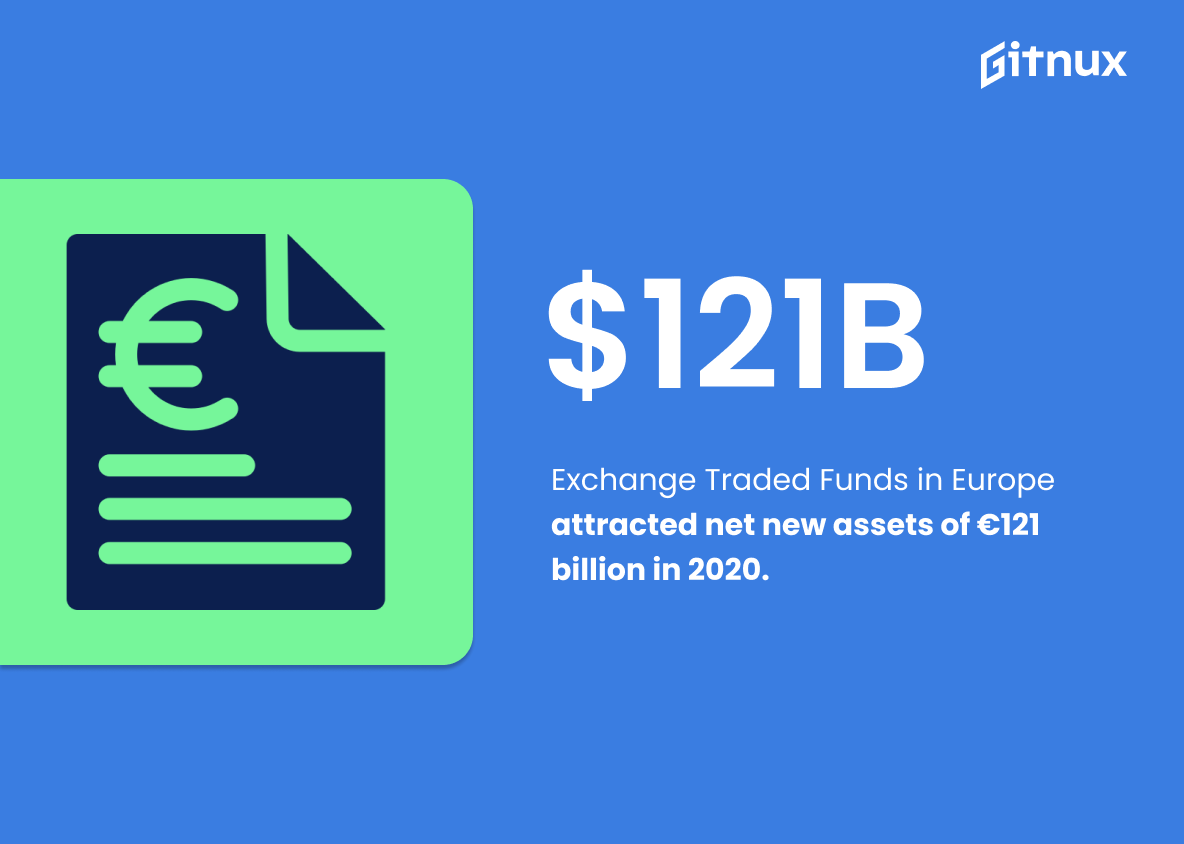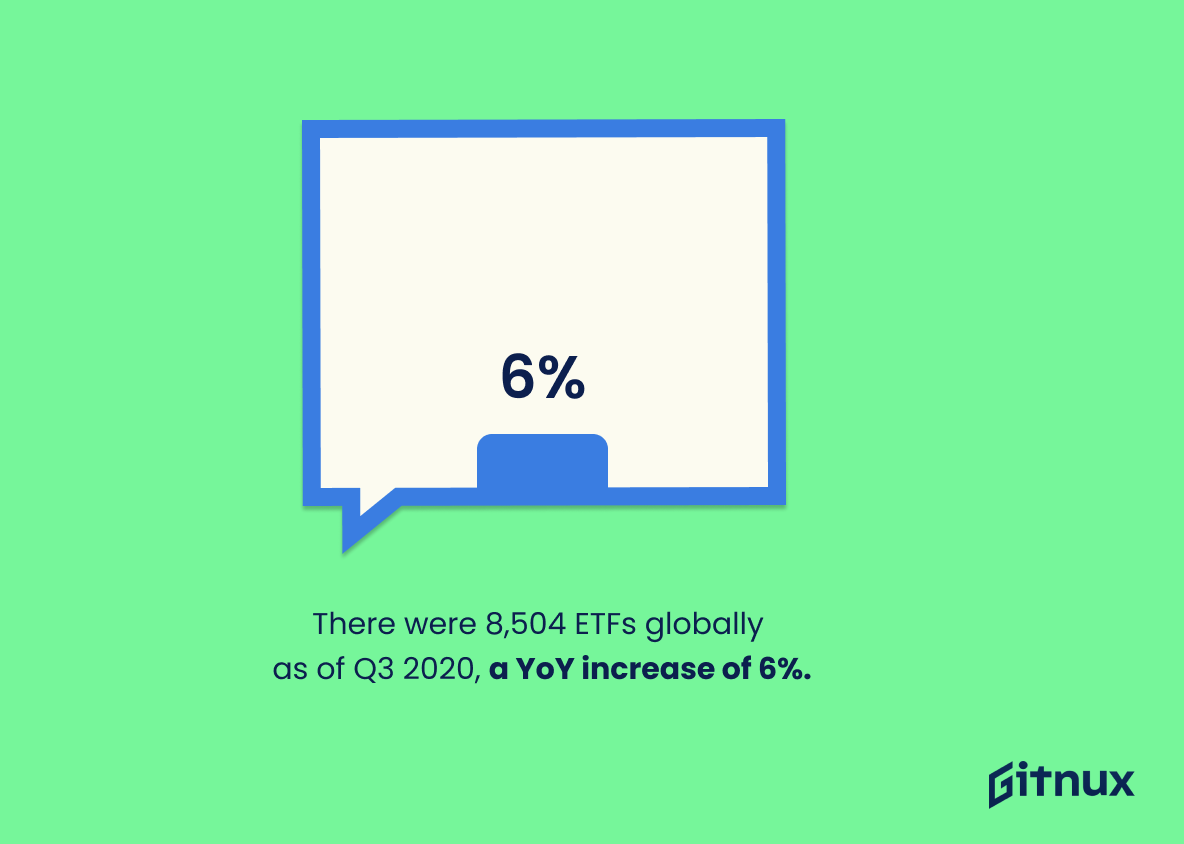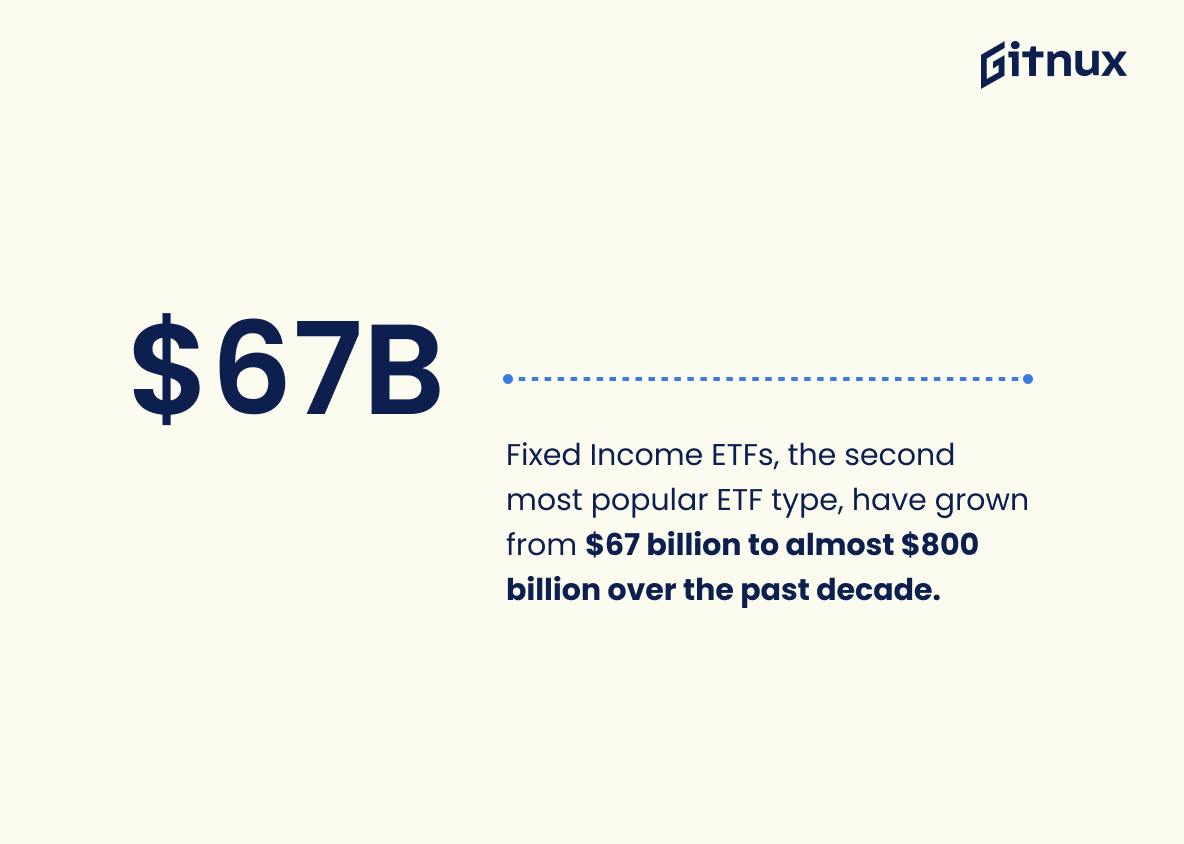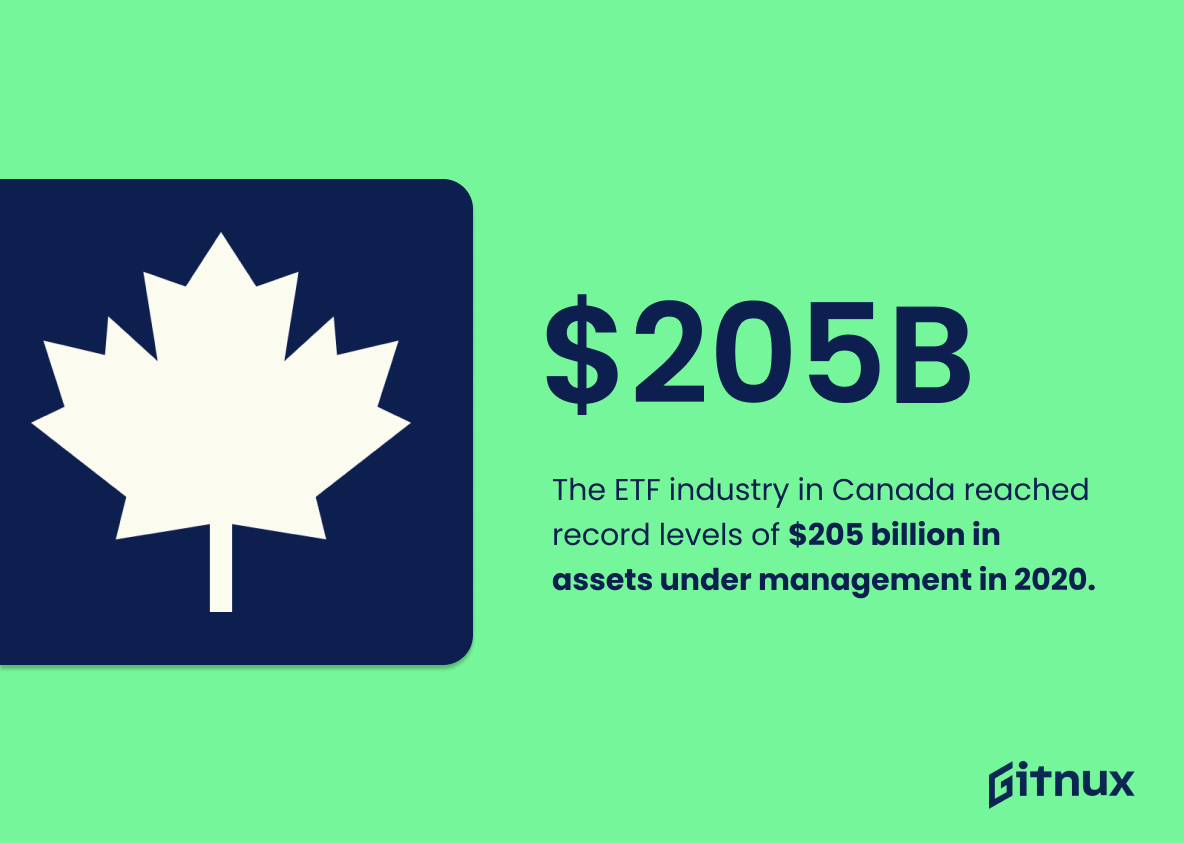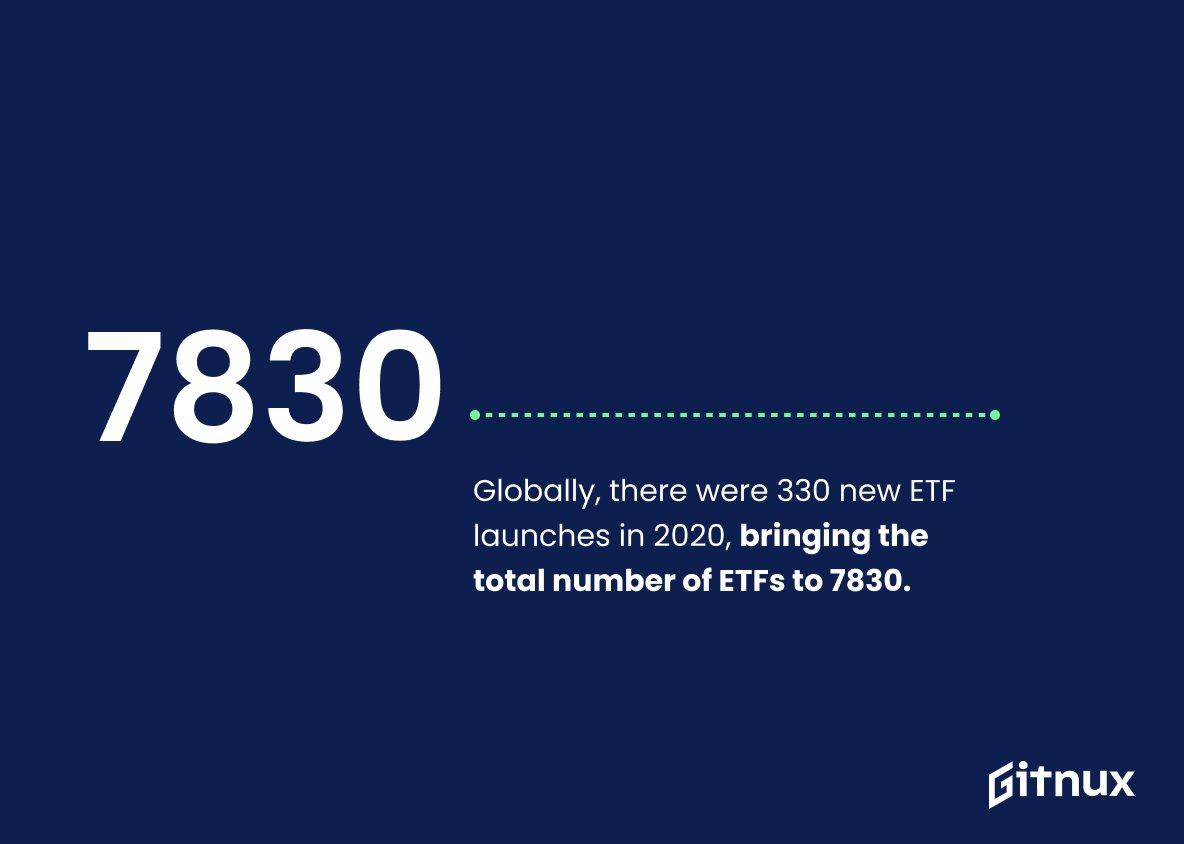Welcome to an illuminating exploration into the realm of Exchange Traded Funds (ETFs). In today’s financial world, ETFs are gaining considerable attention for their unique blend of features that make them a popular choice for investors. Our in-depth dive into the ETF industry statistics will provide you with not just dry numbers, but a comprehensive understanding of trends, growth perspectives, and future potential.
Whether you are an investor looking to spread your portfolio, a financial enthusiast, or simply intrigued by the world of ETFs, this blog has something of value for you. Get ready to delve into the fascinating data and statistics that underpin this rapidly-expanding financial landscape.
The Latest ETF Industry Statistics Unveiled
United States is the leader in ETF industry, hosting about 72% of Global ETFs as of 2019.
Highlighting the United States’ commanding lead in the ETF industry serves as a compelling anchor point in a blog post about ETF Industry Statistics. With the U.S. hosting 72% of Global ETFs as of 2019, it sets the tone of America’s influential role and dominance in this sector.
It not only indicates the size and dynamism of the U.S. market, but also underscores the trust and confidence international investors place in its stability and regulations related to ETFs. Furthermore, this staggering figure implies significant opportunities and potential for growth in other markets, making this a lucrative industry for exploration and expansion worldwide.
The largest ETF worldwide in 2021 is the SPDR S&P 500 ETF Trust with assets amounting to approximately 380.93 billion U.S. dollars.
Taking into consideration the awe-inspiring worth of the leading ETF on the planet, the SPDR S&P 500 ETF Trust, standing at around 380.93 billion U.S. dollars in 2021, sheds light on the magnitude and influence of the ETF industry. This precipitous amount not only places this ETF at the zenith of the industry, but it also underlines the ETF’s remarkable ability to amass substantial assets.
It’s a testament to the scale of the market these ETFs can reach and captures the extent to which investors worldwide entrust their funds to such financial instruments. In the realm of ETF Industry Statistics, this figure is a towering beacon, casting a wide ray of illumination over the landscape, offering context and impact, while setting a high bar for aspirants.
Total net assets of U.S.-listed ETFs in the U.S. reached $5.4 trillion in 2020, up from $4.4 trillion in 2019.
The towering increase of a trillion dollars in Total net assets of U.S.-listed ETFs from $4.4 trillion in 2019 to $5.4 trillion in 2020 is no mere numerical jugglery. It is a vibrant testament to the growing appeal and dynamism of the ETF industry within the United States.
This surging trajectory not only signifies the expanding investor confidence in ETFs, but also underscores the industry’s efficient adaptability amid pandemic-stricken economic uncertainties. In a broader perspective, such a substantial upswing unveils the potential of ETFs as a dynamic economic force, strengthening the investment landscape in innovative ways.
Equity-based ETFs are the most popular with almost 77% of the total ETF market share worldwide in 2020.
In the grand arena of the ETF industry, one gladiator towers over all others – equity-based ETFs. With a commanding lead, they claimed nearly 77% of the entire ETF market share worldwide in 2020. Their prevalence isn’t just a testament to their popularity, but also a significant indicator of where investors are placing their bets. It’s like a guiding lighthouse for investors seeking direction in the vast ocean of the ETF market.
Knowing this, investors can align their strategies with this trend and potentially benefit from the momentum that currently privileges equity-based ETFs. Moreover, businesses can use this insight to optimize their financial products offerings, aiming to meet the high demand for equity-based ETFs.
As of 2021, there are over 7,600 ETFs on 79 exchanges worldwide.
By casting a gaze into the realm of ETFs, one uncovers a bustling marketplace teeming with potential investment opportunities. The datum that as of 2021, over 7,600 ETFs sprawl across 79 international exchanges not only underscores the expansive growth of this financial instrument, but it also demonstrates the global acceptance and accessibility to diverse ETF offerings.
Painted on such a broad canvass, this figure adds depth and intrigue to the discourse on ETF industry statistics, graciously inviting readers to experience a sense of wonder about the magnitude and potential diversity housed within this rapidly growing corner of the investment universe. They can delve into an engaging narrative that suggests a rich diversity of ETF options and potential to help today’s investor navigate the often tumultuous seas of the financial markets.
Exchange Traded Funds in Europe attracted net new assets of €121 billion in 2020.
Exemplifying the vibrant growth and potential inherent in the ETF industry, the astounding figure of €121 billion in net new assets garnered by European Exchange Traded Funds in 2020 speaks volumes. It serves as a testament to the escalating investor confidence and burgeoning momentum in this sector.
This remarkable fiscal development, not only substantiates the growing popularity of ETFs as a favored investment vehicle, but also underlines Europe’s prominence in the global financial landscape. Therefore, when delving into ETF industry statistics, this specific figure holds a significant place, painting a robust picture of the market dynamism and investment enthusiasm that encapsulates the industry today.
There were 8,504 ETFs globally as of Q3 2020, a YoY increase of 6%.
The sea of financial opportunities is expanding, showcasing a steady growth pattern, as reflected in the numbers. As of third quarter 2020, the globe welcomed a new band of 8,504 Exchange Traded Funds (ETFs), which notably heralds a 6% escalation year-over-year. This pulsating heartbeat of the ETF industry cannot be overlooked for its vivacious capacity to reveal trends, priorities, and the industry’s overall health in the blog post about ETF Industry Statistics.
Not only does it mirror the buoyancy of the market, but it also sheds light on consumer trust and appetite for ETFs, setting the tone for aspiring investors and industry analysts. It’s a sturdy testament to the increasing allure of ETFs in the global financial environment.
Fixed Income ETFs, the second most popular ETF type, have grown from $67 billion to almost $800 billion over the past decade.
The striking growth of Fixed Income ETFs from a mere $67 billion to a staggering almost $800 billion in a decade offers an illuminating insight into the ETF industry’s landscape. Signifying a monumental surge, this shift underscores not just the increasing investor appetite for this specific ETF category, but also manifests the transformative expansion of the ETF sector as a whole.
In relation to a blog post on ETF industry statistics, this vivid growth trajectory offers compelling proof of the industry’s dynamic nature and validates the tangible appeal of ETFs as versatile investment avenues. An understanding of this growth also strengthens our grasp on market trends, helping us navigate the investment terrain with greater acuity.
In 2020, approximately 83% of U.S. financial advisors reported using ETFs, up from 73% in 2013.
The vibrant increase in the use of ETFs by U.S. financial advisors, jumping from 73% in 2013 to an impactful 83% in 2020, is an essential market bellwether to consider. It underlines the growing acceptance and adoption of ETFs as a preferred financial instrument in investment strategies.
Such a spike demystifies the perception of risk and complexity often associated with ETFs, revealing a broader industry trend towards diversification and refined asset management. By observing this shift, readers of our blog post can grasp the ongoing transformation in the ETF industry, potentially guiding their investment decisions or advisory practices.
In Asia Pacific (APAC), excluding Japan, the ETF industry assets stood at $218 billion as of August 2021.
Diving into the vibrant heart of ETF industry statistics, one striking figure leaps off the page. APAC, stripped of Japan’s contribution, embraced ETF industry assets amounting to a staggering $218 billion as per the data till August 2021. This magnetic piece of data transcends mere ordinary numbers, serving as a temperature gauge for the regional financial vitality and investor’s trust in the region’s ETF market.
Additionally, it forms a compelling backdrop that allows a deeper understanding of the appetite for innovation in the grand theatre of finance and investment. This statistic, in essence, not only projects APAC’s position in the world of ETFs, but also presents an intriguing insight into potential growth and expansion of ETFs within this dynamically evolving market.
The ETF industry in Canada reached record levels of $205 billion in assets under management in 2020.
Surfing the waves of the ETF industry, it becomes clear that the towering achievement of the Canadian market in reaching a staggering $205 billion in assets under management in 2020 is not a drop in the ocean. Rather, it is a testament to the thriving growth and vitality of the industry, creating a splash that resonates throughout the financial world.
It showcases this sector’s thriving portfolios, diversified investment avenues, and a shift in the preferred choice of investors. This amassed treasure in ETFs sets a dynamic stage for the industry, forecasting a promising future full of opportunities begging to be explored, and it forms a compelling illustration of the surging popularity and strengthening position of ETFs within the financial ecosystem.
ESG (environmental, social, and governance) ETFs grew by 200% globally in 2020, reaching over $189 billion in assets under management.
The statistic showcasing the phenomenal 200% growth in ESG (environmental, social, and governance) ETFs worldwide in 2020, with assets under management reaching a staggering $189 billion, serves as a strong beacon illuminating the shifting dynamics in the realm of investment. It underscores the rising tide of conscientious investing, where not just financial returns but sustainability and ethical considerations steer investment decisions.
Seen through the spectacles of ETF Industry statistics, it becomes evident that the demand for responsible investment channels is not just a fleeting trend, but a mold-breaking phenomenon, reshaping the investment landscape to its core. This swift spike in ESG ETFs, thus, is not just a statement but forms the crux of the narrative around the ETF industry’s evolution, reflecting the depth and density of investors’ increasing penchant for sustainability-focused investments.
Globally, there were 330 new ETF launches in 2020, bringing the total number of ETFs to 7830.
Peeling the layers of this significant statistic reveals the growing pulse of the ETF industry. The global boost of 330 fresh ETFs in 2020 is quite a story in itself, defying a challenging economic landscape to fortify the industry’s standing. This figure doesn’t just represent innovative financial instruments; but rather, signifies keen investor interest and the industry’s resilience amid turbulent times.
What’s more, the impressive stride to a total of 7830 ETFs paints a robust ecosystem teeming with diverse investment choices across varied sectors, geographies, and strategies. In the blogosphere where the pulse of the ETF industry is meticulously assessed, these numbers throw vibrant shades of enthusiasm, grandeur, and conviction. From the perspective of investors, industry competitors, and market analysts, this speaks volumes about the scale, scope, and potential that the ETF industry holds for the world’s investment scenario.
Conclusion
The ETF (Exchange-Traded Funds) industry continues to surge, proving itself as a major force in the investment world. The compelling statistics spotlight not only the industry’s prodigious growth but its influence, versatility, and resilience as well. Driven by a growing desire for diversification, cost-effectiveness, tax-efficiency, and transparency, more and more investors are gravitating towards ETFs.
This only further underscores the fact that the ETF industry is not a passing financial fad, but a game-changer with an impact likely to reverberate through the investing landscape for decades to come. As a savvy investor or a financial professional, keeping a pulse on ETF industry statistics is crucial for staying ahead of the game and making the most informed decisions.
References
0. – https://www.www.morningstar.com
1. – https://www.www.ici.org
2. – https://www.www.blackrock.com
3. – https://www.www.broadridge.com
4. – https://www.www.trackinsight.com
5. – https://www.etfdb.com
6. – https://www.www.investmentexecutive.com
7. – https://www.www.etfstrategy.com
8. – https://www.www.statista.com
